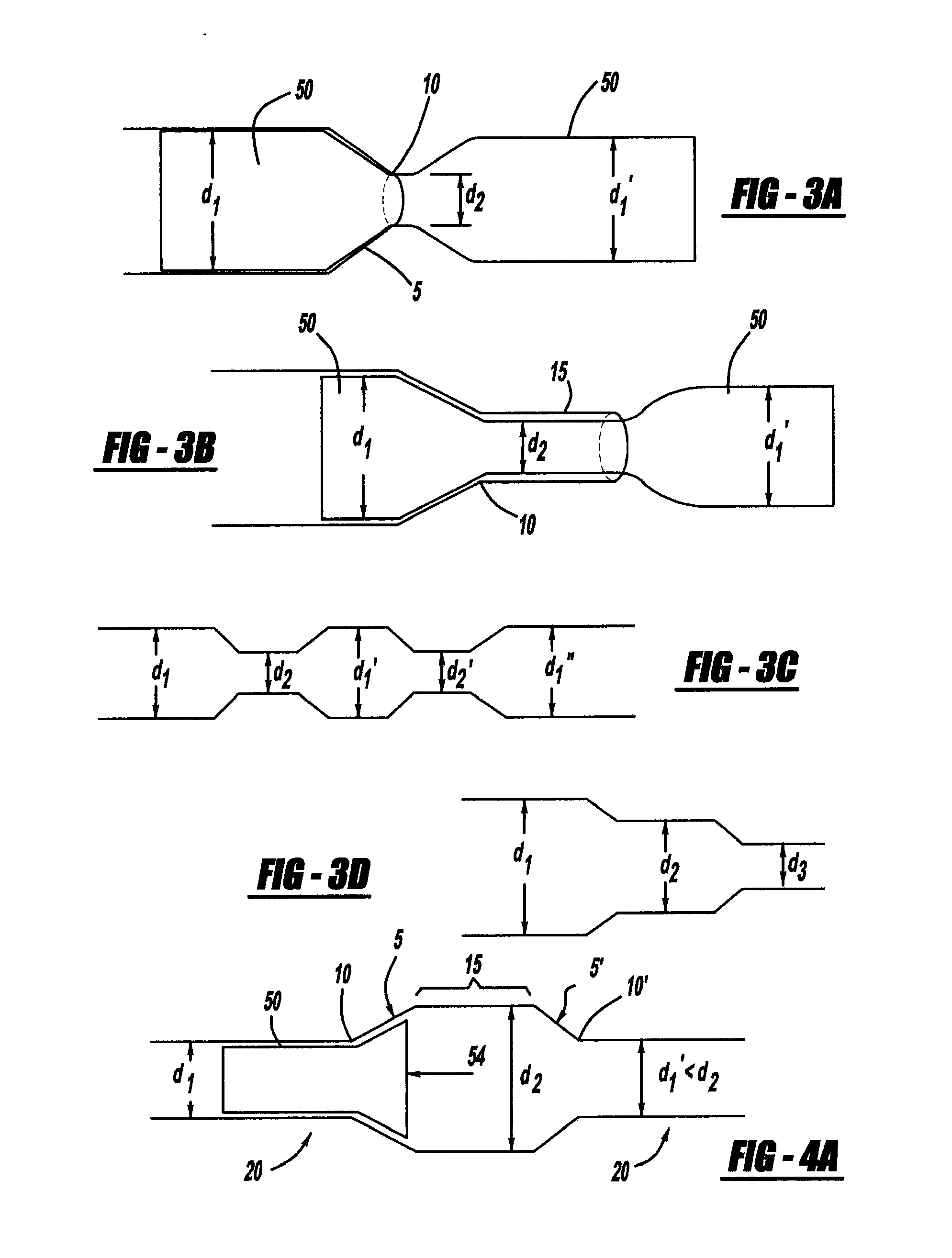Solid state deformation processing of crosslinked high molecular weight polymeric materials
a high molecular weight, solid state deformation technology, applied in the direction of manufacturing tools, prosthesis, other domestic articles, etc., can solve the problems of reducing the level of free radical reducing the degree of oxidative stability, and reducing the level of free radicals in the crosslinked polymer. , the effect of reducing the level of free radicals
- Summary
- Abstract
- Description
- Claims
- Application Information
AI Technical Summary
Benefits of technology
Problems solved by technology
Method used
Image
Examples
example 1
[0137]Radiation crosslinked, deformation processed UHMWPE is produced using the following steps:
[0138]1. Radiation crosslinking. Isostatically molded UHMWPE rods of dimensions 3″×14″ (GUR resin from Ticona, Inc., Bishop, Tex. fully consolidated according to the isostatic pressure steps described in U.S. Pat. No. 5,688,453) are vacuum packed in a foilized bag and gamma radiation crosslinked with a nominal dose of 50 kGy.
[0139]2. Preheating. Prior to deformation processing, the rod is removed from the foilized bag and raised to 133° C. for 4 to 12 hours in an oven.
[0140]3. Solid state, hydrostatic extrusion. The heated rod is then removed from the oven and placed in the holding chamber of a press. The temperature of the holding chamber is 130° C.±5° C. The bar is then ram extruded using a sacrificial puck made of crosslinked UHMWPE through a circular die, into a cooling chamber with a diametral compression ratio of 1.5 (diameter of 3″ down to 2″).
[0141]4. Cooling and solidification. T...
example 2
Isoareal Restriction
[0153]A bulk UHMWPE in the form of a 3″×14″ cylinder is subject to 5 Mrad of gamma irradiation to crosslink it. The crosslinked bar is preheated to 130° C. for 4 hours. The bar is then extruded through a constant area elliptical mold tool. The cross-sectional area is maintained about 7 sq. in., which is the cross-sectional diameter of the bar. Inside the elliptical mold tool, the shape starts at a 3 inch diameter circle and changes into an ellipse (1.5 in. minor axis×6 in. major axis) at a position 0.75 inches from the start. The tool changes back to 3 inch diameter circle at position 1.5 inches from the start. Then the tool changes to an ellipse (1.5 inch minor×6 inch major axis) at position 2.25 inches from the start. The second ellipse is oriented 90° to the first ellipse. Then the tool changes back to a 3 inch diameter circle at a position 3 inches from the start. The bulk material is extruded from the elliptical material mold tool where it is cooled. During ...
PUM
| Property | Measurement | Unit |
|---|---|---|
| diameter | aaaaa | aaaaa |
| diameter | aaaaa | aaaaa |
| temperature | aaaaa | aaaaa |
Abstract
Description
Claims
Application Information
 Login to View More
Login to View More - R&D
- Intellectual Property
- Life Sciences
- Materials
- Tech Scout
- Unparalleled Data Quality
- Higher Quality Content
- 60% Fewer Hallucinations
Browse by: Latest US Patents, China's latest patents, Technical Efficacy Thesaurus, Application Domain, Technology Topic, Popular Technical Reports.
© 2025 PatSnap. All rights reserved.Legal|Privacy policy|Modern Slavery Act Transparency Statement|Sitemap|About US| Contact US: help@patsnap.com



